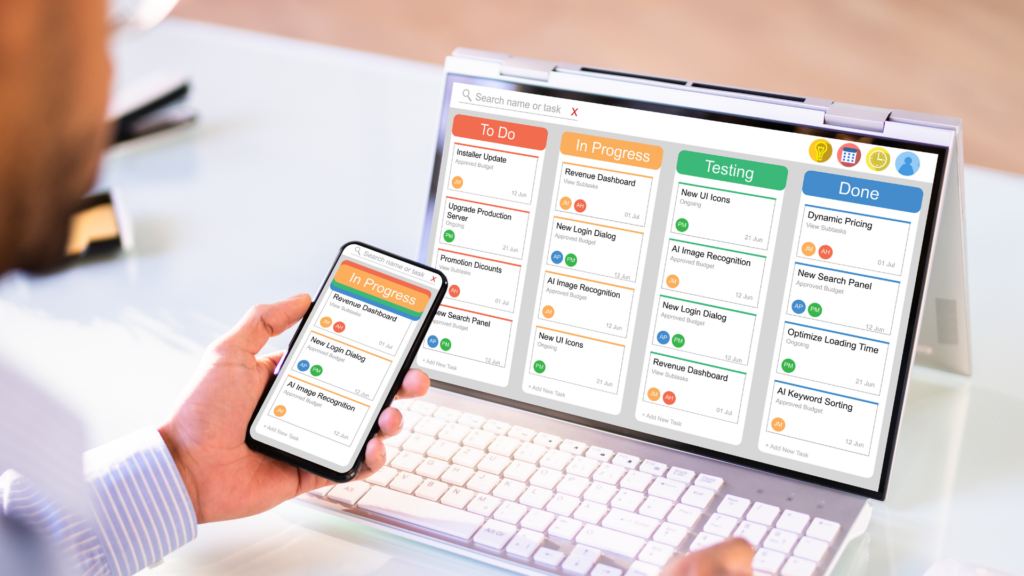
Welcome, React Native enthusiasts! In this chapter, we embark on an exciting journey to demystify the process of mobile app development using React Native. We’ll explore the architectural aspects, the key steps involved, and the best practices that will guide you towards creating stunning, cross-platform mobile apps. So, fasten your seatbelts and let’s dive into the realm of React Native architecture!
Breaking Down the Architectural Process for Mobile App Development
Understanding the React Native Architecture
React Native empowers developers to build native-like mobile apps using JavaScript and React. By leveraging native components, React Native offers a bridge between the JavaScript codebase and the native platform, resulting in high-performance, cross-platform apps.

1. Component-Based Architecture:
At the heart of React Native lies a component-based architecture, which breaks down the app into reusable and self-contained building blocks. Components represent different UI elements and encapsulate their own logic, resulting in a modular and maintainable codebase.
Technical Insight: React Native’s component-based architecture follows the principles of React, where components can be classified as functional components or class components. Functional components are stateless and rely on props to render UI, while class components have state and lifecycle methods for more complex logic.

2. Virtual DOM:
React Native employs a virtual DOM (Document Object Model) that efficiently updates and renders UI components. The virtual DOM acts as an intermediary, allowing developers to declaratively define the UI based on state changes.
Technical Insight: Under the hood, React Native uses a reconciler to update the virtual DOM efficiently. When a component’s state changes, React Native smartly identifies the minimal changes needed in the actual UI, optimizing performance by selectively updating only the necessary parts.

3. Native Modules:
React Native allows integration with native modules written in languages like Java or Objective-C. These native modules provide access to device-specific features or APIs that are not readily available through React Native’s JavaScript layer.
Technical Insight: To create a native module, developers need to bridge the gap between JavaScript and native code. React Native provides tools like Native Modules and Native UI Components that enable communication and interaction between JavaScript and the underlying native platform.

The Mobile App Development Process with React Native

1. Requirement Analysis:
Understand the project’s objectives, target audience, and specific features to be implemented. Define the scope, gather user stories, and create a roadmap for development.
Technical Insight: During the requirement analysis phase, it’s crucial to consider the compatibility of React Native with the desired features. While React Native has a vast ecosystem of community-driven libraries, some platform-specific features may require custom native development or the use of third-party modules.

2. Design and UI/UX:
Craft visually appealing designs and ensure an intuitive user experience. Leverage design tools and libraries compatible with React Native, such as React Native Elements or React Native Paper.
Technical Insight: Designing UI/UX for React Native involves leveraging pre-built UI components, custom styling using CSS-like properties, and adapting the design to platform-specific guidelines. Tools like React Navigation can be used to create navigational flows within the app.

3. Project Setup:
Set up the development environment by installing Node.js, React Native CLI, and other dependencies. Create a new React Native project using the CLI commands and configure essential settings.
Technical Insight: React Native CLI provides a command-line interface to create, build, and run React Native projects. Developers can utilize tools like Metro Bundler to bundle JavaScript code and handle hot reloading for efficient development.

4. App Architecture:
Design the app’s architecture, considering factors like component hierarchy, state management (e.g., Redux or Context API), and navigation (e.g., React Navigation). Plan the folder structure and define coding conventions.
Technical Insight: State management libraries like Redux or Context API help manage global application state, making it accessible across components. Navigation libraries like React Navigation provide a seamless way to handle navigation between screens and manage routing in a React Native app.

5. Component Development:
Begin building UI components using React Native’s core components and any additional third-party libraries. Implement business logic and handle user interactions within each component.
Technical Insight: React Native offers a rich set of pre-built UI components that closely resemble their native counterparts, such as View, Text, Image, and ScrollView. Developers can also utilize community-driven libraries like React Native Vector Icons or React Native Firebase to enhance the app’s functionality.

6. API Integration:
Connect your app to external APIs or backend services using tools like Axios or the Fetch API. Retrieve and manipulate data, handle authentication, and ensure smooth communication between the app and the server.
Technical Insight: React Native provides built-in APIs like Fetch for making HTTP requests and interacting with RESTful APIs. Developers can also utilize libraries like Axios or GraphQL to simplify API integration and data handling within the app.

7. Testing:
Thoroughly test your app using tools like Jest or React Native Testing Library. Write unit tests for components, integration tests for app flows, and ensure proper error handling.
Technical Insight: React Native testing frameworks like Jest provide a robust testing environment for running tests and assertions. Developers can simulate user interactions, check component rendering, and test business logic to ensure app reliability and quality.

8. Deployment:
Prepare your app for deployment by generating platform-specific builds (APK for Android or IPA for iOS). Follow platform-specific guidelines for app submission to respective app stores (Google Play Store or Apple App Store).
Technical Insight: React Native provides tools like React Native CLI and Gradle for Android or Xcode for iOS to generate app builds. Developers need to follow the respective platform’s guidelines for app signing, app icons, and other required configurations.

9. Continuous Integration and Delivery:
Implement CI/CD practices to automate the build, test, and deployment processes. Utilize services like Jenkins, CircleCI, or GitHub Actions to ensure seamless and efficient app updates.
Technical Insight: CI/CD tools integrate with version control systems (e.g., Git) to automatically trigger build and test processes when changes are pushed to the repository. These tools facilitate automated testing, code analysis, and deployment, reducing manual effort and ensuring faster app updates.

Best Practices for React Native Development
Keep Components Reusable: Design components to be reusable across different parts of the app for improved maintainability and scalability.
Technical Insight: Utilize higher-order components (HOCs) or React hooks to extract common logic and create reusable component abstractions. This promotes code reusability and reduces duplication, making future modifications and updates easier.
Optimize Performance: Employ performance optimization techniques like lazy loading, code splitting, and image optimization to ensure smooth app performance.
Technical Insight: Techniques like code splitting allow loading only the necessary code chunks on demand, reducing initial app load time. Lazy loading components or images helps minimize resource consumption until they are needed, improving app performance and responsiveness.
Test Rigorously: Implement comprehensive testing strategies to catch bugs and ensure a robust app. Employ unit tests, integration tests, and UI tests for thorough coverage.
Technical Insight: Unit testing verifies the functionality of individual components, integration testing ensures proper communication between different parts of the app, and UI testing validates the app’s behavior from a user’s perspective. Tools like Detox or Appium can be used for UI testing in React Native.
Stay Updated: Keep up with the latest React Native releases, libraries, and best practices. Regularly update dependencies to benefit from performance improvements and bug fixes.
Technical Insight: React Native has an active community that regularly releases updates, bug fixes, and new features. Staying up-to-date ensures compatibility with the latest platform versions, security patches, and performance enhancements.
As we conclude this topic, you now possess a solid understanding of the React Native development process. From grasping the architecture’s component-based approach to navigating the key steps involved, you’re equipped with the knowledge to embark on your React Native adventure.
Embrace the power of React Native’s cross-platform capabilities, design stunning UIs, and build performant mobile apps that cater to a wide range of users. Remember to follow best practices, test rigorously, and stay up-to-date with the ever-evolving React Native ecosystem. Now, go forth and craft remarkable mobile experiences that shine on both iOS and Android platforms.
Contact Distance Coding https://calendly.com/distancecoding/30min today to discuss your unique needs and discover tailored solutions that align with your goals.We are here to help. Let’s talk and get to know each other. Looking forward to hearing from you.
Distance Coding – www.distancecoding.agency
Happy coding with React Native!




